
Last week was the week the Sage Event—a conference of Sagers (individuals who have been Sage Bionetworks supporters over the years and some new comers) that I have been organizing for the last 5 months. At its core, the idea for this event was the provide an opportunity for Sage Scholars and Sage Mentors to come together and share their projects. These Sagers are incredible people! Below are some of my thinking as it emerged from listening to their presentations. And when the videos become available, I will link to those as well in another post.
There were four general themes for the day:
1. ICT and Health;
2. Delivering Health to Hard-to-serve Populations;
3. Rare/Orphan Diseases; and
4. Health, Education, Patient Data, and Advocacy.
But the ideas shared at the event were not to be constrained! So allow me to present a very different non-technical view as a way of summarizing ideas that floated during the day.
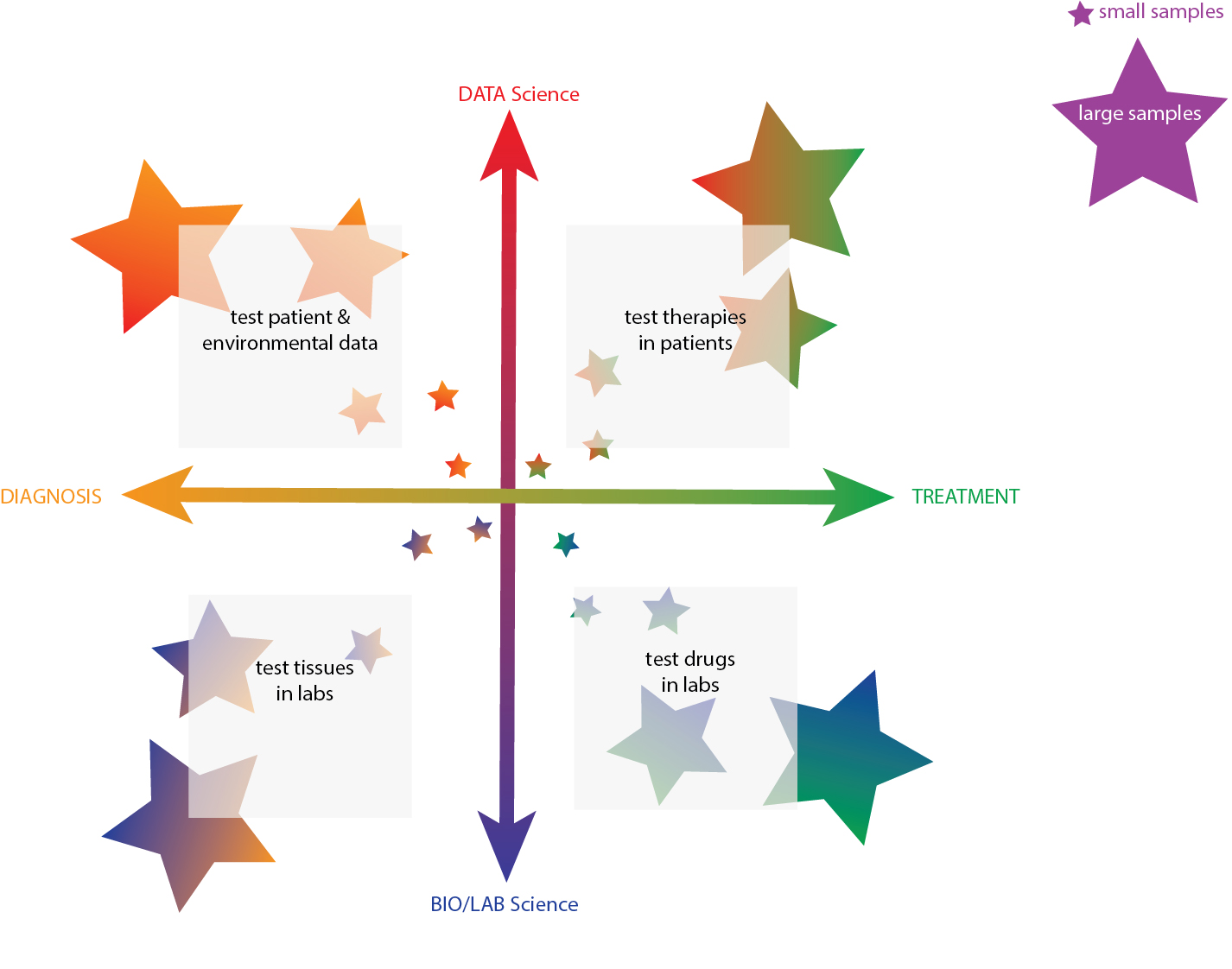
First, allow me to break the science investigations into two parts:
• First based on DATA Science—analysis of information available about patients and the environment as coded in medical records or submitted via apps or gathered via sensors. In other words, scientific research that comes out from analysis of information obtained without a lab.
• Second is LAB/BIO data—information obtained by analyzing actual samples and doing chemistry in a lab setting.
It is important to understand that both of these can be helped (accelerated) by using specialized computational algorithms, beefy computer systems, distributed networks, and large data samples. That is computers and innovative ways of using them can be a huge asset to gathering and analyzing health data.
The second division I saw was between the focus on diagnostics versus the focus on treatment. Obviously, we want it all. But specialization on one or the other determines who does which. Patient groups originally focused on treatment. But with Sage Bionetworks Apple research Kit, individuals can be involved with diagnosis as well. And again, computer science can expand dramatically the impact of diagnostic research and treatment search.
If we put these axis together, we can form a 4×4 grid:
Diagnostics and DATA Science—research patient and environmental data
Diagnostics and BIO/LAB Science—lab work on tissue samples
Treatment and DATA Science—test therapies in patients by gathering information
Treatment and BIO/LAB Science—test potential drugs and therapies in lab
Almost every presentation we had during the Sage Event fell into one of these quadrants.
So allow me to give my take on the presentations. You will be able to watch the videos themselves, once they become available.
Keynote: Stephen Friend, President of Sage Bionetworks

Dr. Friend gave a great presentation highlighting the differences between how we think medical research is done and what actually occurs in practice. The problem is that the “system” is set up to allow for certain ways of doing things. For example, “we” reward researchers who hoard their data because publication of novel results is one of the accepted measures of researcher’s success. So sharing data is risky. But sharing data is how we can actually find beneficial approaches to new treatments and better diagnostic procedures. So one of the projects Sage Bionetworks pioneered is a platform for sharing data. And with Apple Research Kit, Sage is a keystone to doing massive-scale research. From analyzing 25 patients in a study as is currently possible with ordinary clinical studies, Apple Research Kit allows thousands to participate! This change in scale of the available data is making huge differences in what we can see in the data.
One of the most remarkable things Dr. Friend talked about was the analysis of Parkinson’s symptoms. iPhones running Parkinson’s app (based on Apple Research Kit and Sage background patient database management) were able to show the effects of stress on the disease. In particular, parkinson’s patients showed strong correlation between race riots and worsening symptoms! This would not have been possible without a new way of looking at patient participation and medical data analysis. [This is quadrant top right in the diagram above.]
Guest Speaker: Ethan Watters, Journalist/Author (psychiatry and social psychology): “How America Exports PTSD: The Cultural Connection in Reacting to Trauma”
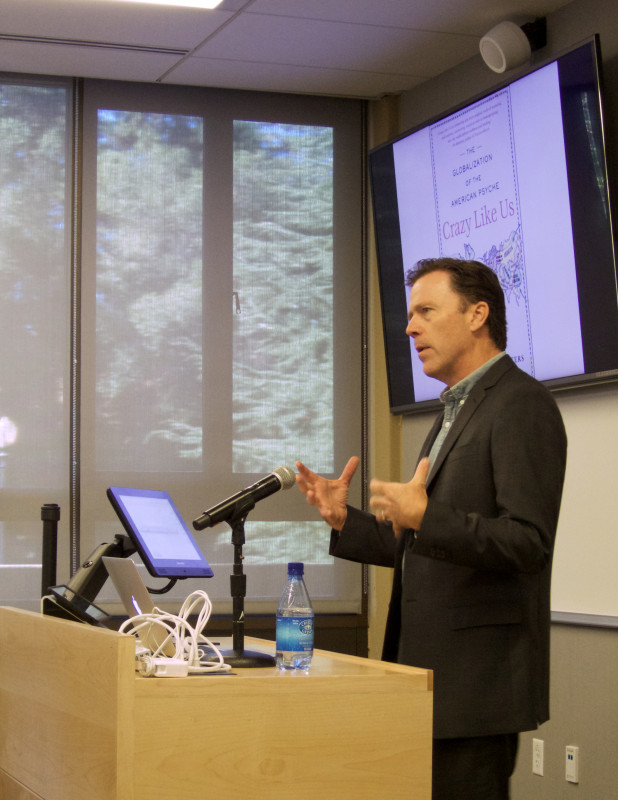
Ethan Watters is amazing! If you haven’t read his book “Crazy Like Us”, you should! Ethan traveled the world and did a ton of research on cultural differences in symptoms between Western World and the rest of the world. His presentation (and books) are a must see for researchers and medical professionals dealing with patients from other parts of the world. It also sheds light on how symptoms change through time—what is an acceptable form of pain and suffering in one place, one age varies widely. Physical symptoms of psychological illness are culturally influenced (if not defined). Ethan’s work also falls in the top right quadrant, even as the data scale is smaller than that presented by Dr. Friend.
Sage Mentor: Eri Gentry: “The Democratization of Research, from Open Source Journals to Community Labs”

Eri Gentry runs a community bio lab—a safe place to learn the art of bench science. She welcomes researches (doctors and Ph.D.s) as well as students with their parents to work on projects using real research equipment. With cuts in education, this is a place of exploration and hands-on learning. Eri opens doors to venture capitalists and executives as well as government policy-makers. We all need to understand how labs work and how ideas get tested in that environment. Her work is in the bottom left and right quadrant—she teaches people to think with their hands as well as with their minds. And she fosters real co-operation!
I hope for a field trip in a near future!
Guest Speaker and Sage Mentor: Theodora Varvarigou: “Semantic-aware, Social-boosted, Data-driven Health Advancements”
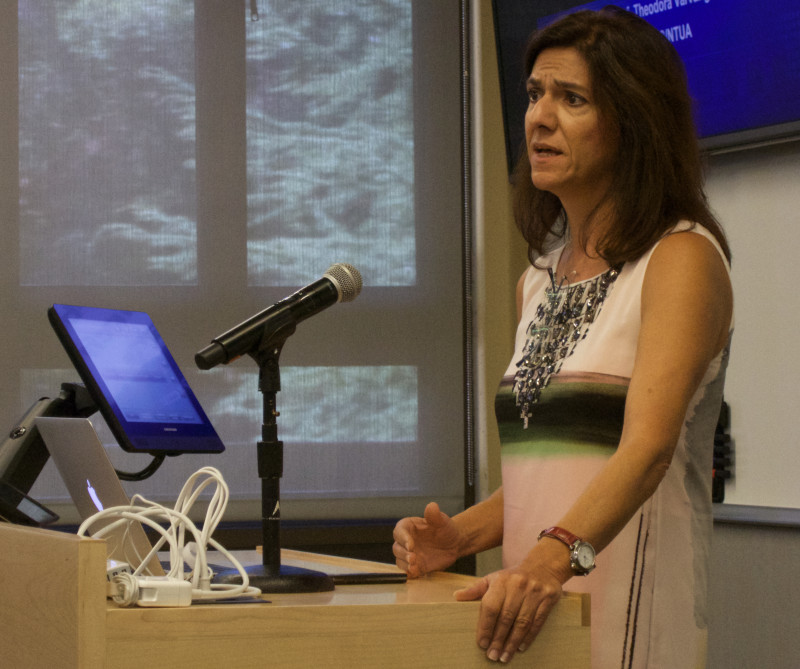
Dr. Varvarigou is a Sage Mentor who traveled all the way fro Athens, Greece to share her ideas with fellow Sagers in the audience. Dora is a computer scientist, and her proposal focused on creating a system that would allow policy-makers to make informed decisions about public health using real data. The basic idea is: “Can we take patient/population input via smart phone apps and other sensors and create a decision-making support system for politicians?” I think this is a very novel way of looking at massive medical/health data, and it has the potential to prevent serious health problems in a population. We would be able to look for correlations between environmental conditions and patients’ symptoms. What would data like that described by Dr. Friend—negative effects of race riots in US on Parkinson’s patients’ symptoms—look like to Surgeon General? To hospital and clinic directors (should we bring more nurses and doctors into the hospital on those days)? To people running nursing homes (do we need extra help and/or extra medication)? To transportation authority (do we need to provide alternative means of commute to people who are not well-enough to drive)? To environmental agencies? The potential is enormous!
Dr. Varvarigou’s proposal lies in the top right quadrant—massive data, massive computation, supported decision scaffolding.
Sage Scholar: Jair Lage de Siqueira-Neto: “Bringing Hope for the 10 Million People Infected with Life-threatening Kinetoplastid Parasites”
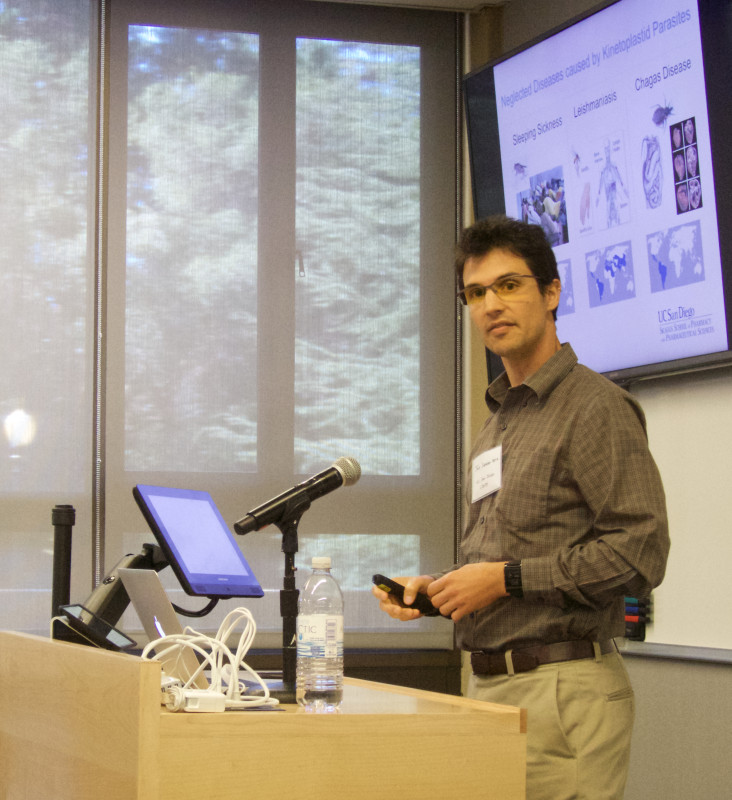
Dr. Lage de Siqueira-Neto work focuses on identifying potential drugs to treat parasites. He was using UCSD bio labs to quickly test existing drugs against compounds found in the cells of the parasites. The advantage, of course, is that existing drugs have already went through the FDA’s stage one drug approval testing. This not only shortcuts the process but also potentially creates low-cost therapies! Old drugs tested at a “super-sonic” speeds to find a possible solution to a horrible health problem. Dr. Lage de Siqueira-Neto research is the lower right quadrant. The computers massively speed up the process of drug analysis and allow to test alternate vectors of treatment. Medical science at its best and most compassionate—this is not a money-making proposition. But these old (and proven-safe) drugs can save millions of lives.
Sage Scholar: Gavin McCormick: “Small Data: What Modern Econometrics Means for Rapid Collaboration”
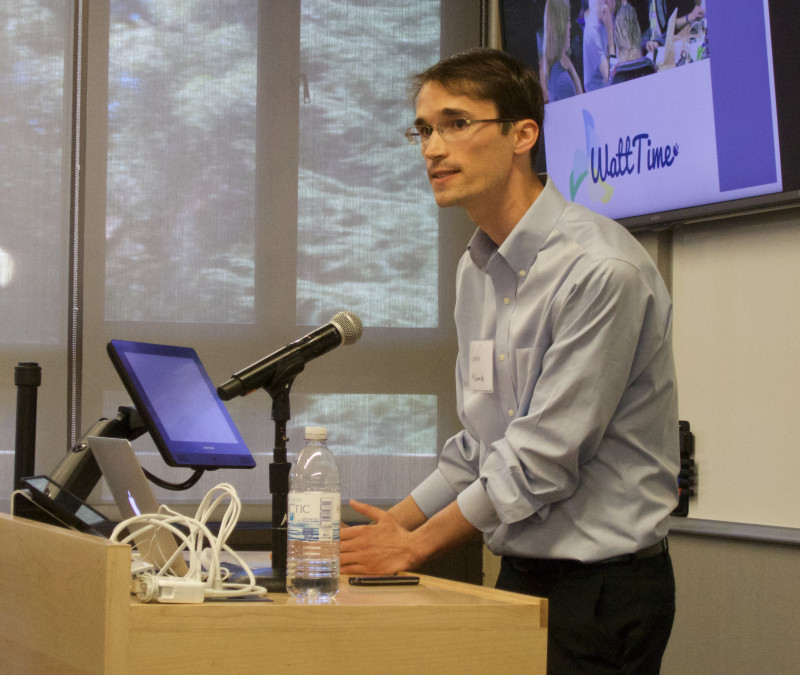
Gavin McCormick is a behavioral economist. What does behavioral economics have to do with health and medicine? A lot! How do we test the efficacy of one treatment over another? Is it ethical to give one patient a procedure denied to another? Gavin showed how data gathered from the world (medical records, hospital charters, environmental information, and patient data) can be used to answer difficult questions, as long the data analyzed is orthogonal—the variables examined are truly independent. So for example, one hospital set is non-profit, while the other is commercial institution. Their decisions on whether to perform a certain procedure are made in a very different ways: the first set of hospitals is looking to minimize the costs of treatment per patient; the other set is looking to maximize the medical costs. Thus the decision to perform a medical procedure (or use newer and thus more expensive drug treatments) could be independent of health outcomes. Looking for such sets of data can help identify truly beneficial medical solutions.
Gavin tried to be very careful to point out that only certain questions could be answered by this type of analysis. His way of looking at the world produces real eye-opening results, but those results are not based on the researchers’ questions—in his world, Gavin starts with independent data sets and looks for what he finds. As opposed to starting with the question and then looking for the data to prove or disprove a theory.
His work is the top right quadrant, I think.
Sage Mentor: Robert Siegel: “Education 3.0”

Dr. Siegel is a Stanford professor and researcher. His talk was focused on education—how do we raise the next generation of scientists? Bob went through the various forms of teaching: observation (teaching 0.1); one-on-one teaching and apprenticeships (1.0); classroom learning (2.0); and the use ICTs in education (3.0). He made a point that the first form of teaching/learning is not unique to humans—animals learn by observation, too. Classroom learning came in during the industrial revolution—we needed the masses to learn how to read and write and do arithmetic to perform well in the factories. This is a one to many model. And the new 3.0 teaching rose with computers (and tapes and TV)—the need to educate even more people, and doing it cheaper, and at the time and place of students’ choosing. Bob raised the question of efficacy—do we really know that the new computerized forms of student engagement with information work? Personally, I believe that some ICT-based educational opportunities work very well. But these might not be the ones whose focus is exclusively on saving money…
Dr. Siegel presentation spans all 4 quadrants—how can we educate doctors, patients, and researchers?
Guest Speaker: Josh Whitkin: “Engaging Young Men in Digital Health Interventions: Failures and Successes”
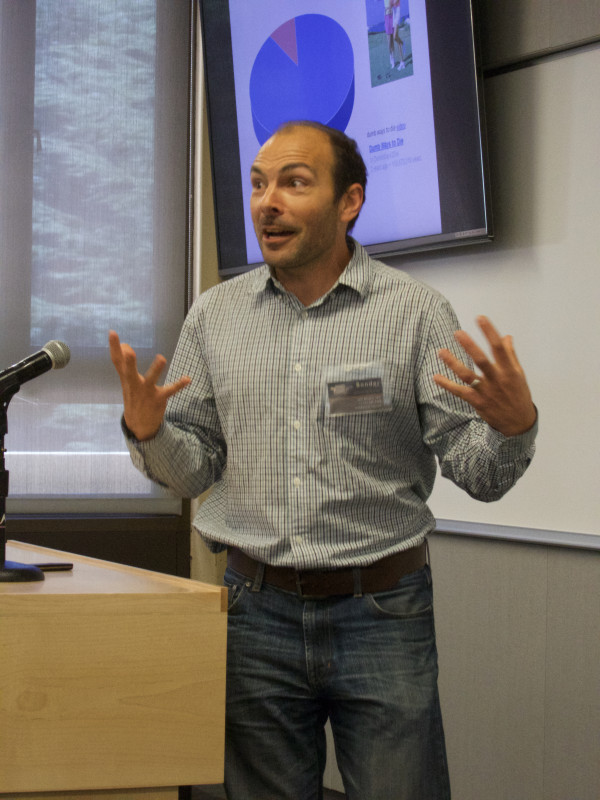
Dr. Whitkin designs and develops games that help patients understand their conditions and find ways of managing them. He was funny and insightful and was willing to share stories of failure! It was an extremely generous presentation—I, personally, learned a lot. It is worth the watch when the videos come out.
Josh’s ideas fall in the top right quadrant—he deals with patients and uses information communication technologies to try to reach populations that are left behind by other educational or outreach approaches.
Sage Scholar: Stephanie Fraley: “Enabling Accessible and Sensitive Sequence Profiling for Systems Medicine”

Dr. Fraley described the horror of long wait for diagnosis of sepsis. Right now, bacterial infections can ravage a patient in hours, and yet it might take over a week to identify the culprit! Dr. Fraley and her team worked to change all that. What was remarkable about Dr. Fraley’s presentation was how UCSD team found the solutions to the problems. Because of the complexity of what she was doing—sequencing snippets of genetic data—she needed to understand not only the medical and biological processes, but also the physics as well as find rapid computational solutions. Her approach required access from all these different disciplines to find the solution. This is what a team can accomplish!
Sage Mentor: Annette Bakker: “Are We Ready for the Change That We Need to Find Effective Treatments for Orphan Disease?”
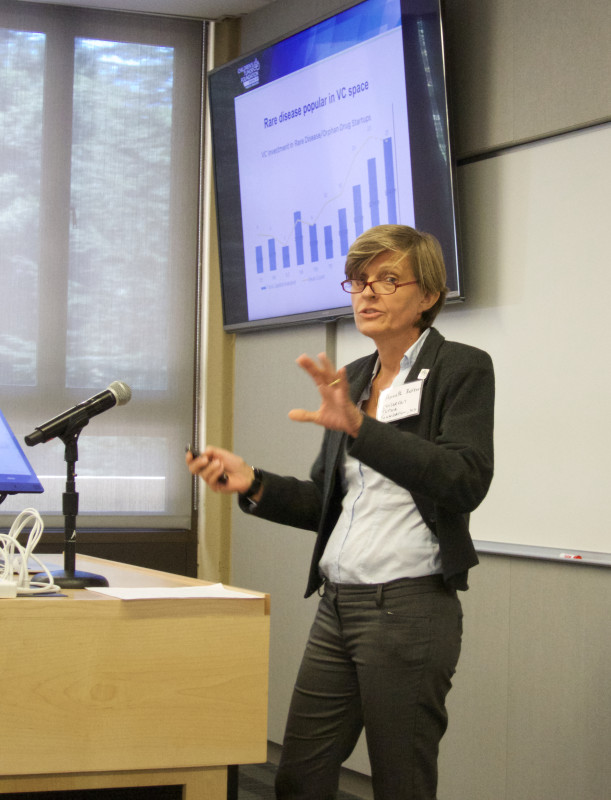
Dr. Bakker introduced the Orphan Disease group of presenters. She talked about how medical research or rare conditions can be blocked by scarce tissue samples, poorly defined patient populations, poor funding due to unknown market potential, and lack of researchers and collaborative teams. Market incentives are still set up to hoard data and reduce cooperation between researchers at different institutions. Especially for rare and orphaned diseases, this could mean no new treatments or no treatments of any kind! She called for changes in how business was done! Dr. Bakker also described working with Sage Bionetworks to solve some of the problems she described.
Sage Scholar: Anjan Debnath: “Discovery of New Drug Leads for Rare Parasitic Diseases”
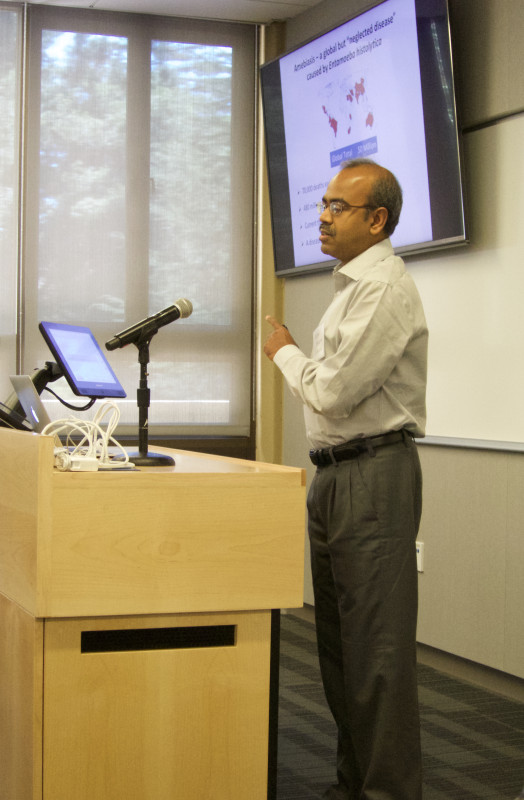
Dr. Debnath is another Sage Scholar from UCSD. His work focuses on finding new therapies by sifting through old drugs.
Sage Scholar: Laura-Isobel McCall: “Targeting Leishmaniasis: Disease Models and Drug Repurposing”
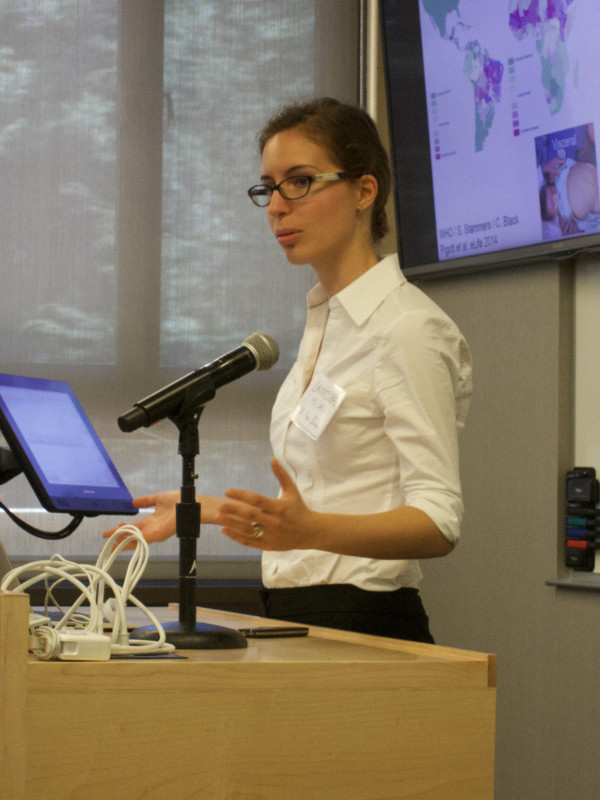
Dr. McCall also presented ideas on drug repurposing to accelerate treatments of rare conditions from the bio lab and deliver them into the hands of doctors treating patients. One of the problems that Laura-Isobel highlighted was the unfairness of drug research—rich, Western diseases get preferential treatment in the world of new drug and therapy development. Money and medical research go hand in hand. By looking at old drugs and testing them against conditions for which they were not originally developed for gives cost-effective solutions and hope to people who are not fortunate enough to be born in U.S. or E.U..
Dr. McCall is using bio lab techniques to test drug compounds at a rapid rate—she is in the lower right quadrant of my diagram.
Sage Scholar: Laurie Rumker: “Before and After the Flood: Stability and Resilience of the Human Gut Microbiota”
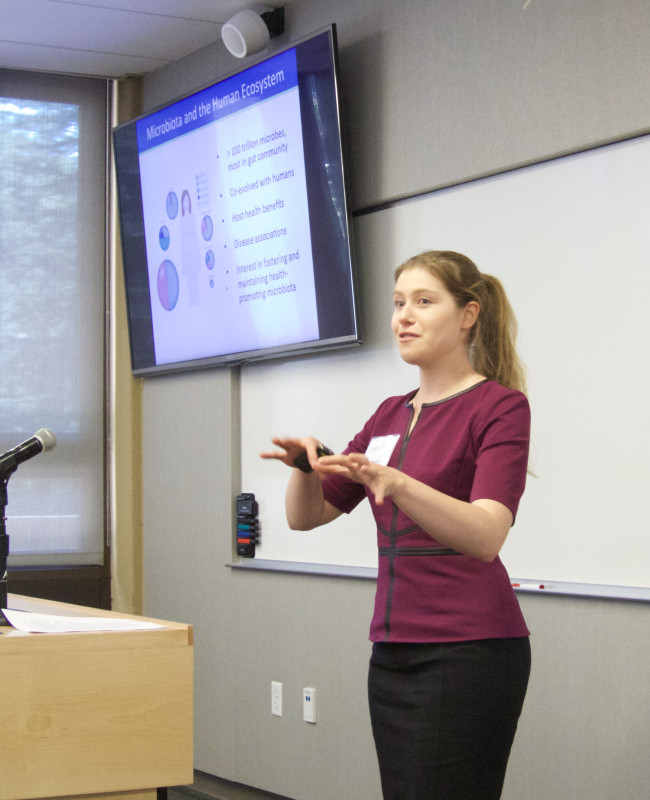
Laurie Rumker was one of the youngest Sage Scholar at this event, but her work was brilliant. She focused on trying to identify the speed of gut flora recovery. She proved that medical research in a bio lab could be done at any stage of educational career. Her work is exceptional! And schools and universities should take note—provide supportive environments and appropriate scaffoldings and your students don’t have to wait to graduate from medical school to contribute to finding health solutions.
Sage Mentor: Peter Kapitein: “Why Patient Advocacy Makes the Difference in Improving Healthcare”

Dr. Kapitein started inspire2live.com to give patients power over their disease and, ultimately, over their treatment. Peter has been the heart of Sage Events ever since they got started.
Sage Scholar: Nicole Dalal: “Laboratory Activities for Broadened Scientific Inquiry (LABScI) — Teaching Science Labs in Pediatric Hospital Schools”
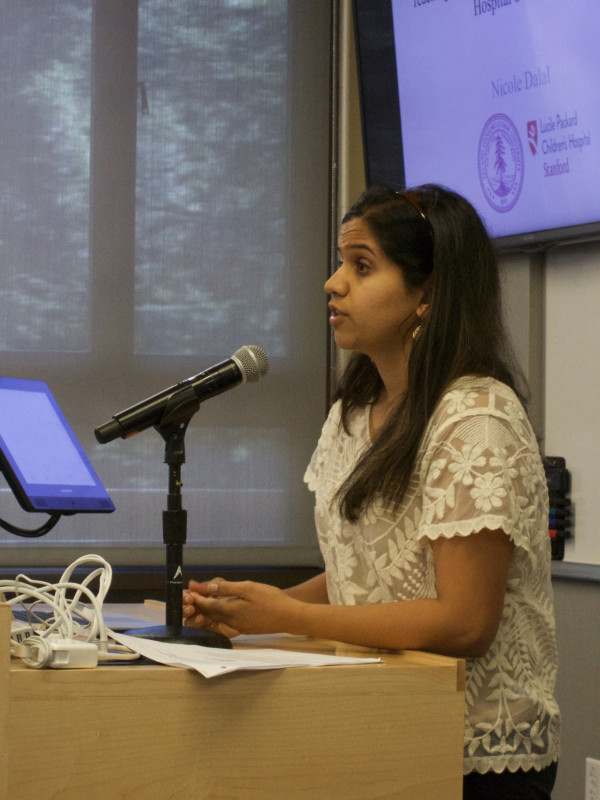
Nicole Dalal presentation focused on her work at the Stanford Children’s Hospital. She created and tested science curriculum for the young patients. Many children who have to spend time at the hospital for treatment fall behind at school. But even more importantly, the scientific method taught by Nicole is critical for these young patients to be able to understand how decisions about their health and treatment are being done. Medicine is not magic. Teaching children (and their parents) science helps them understand and become full participants in the health care decisions.
Nicole made her learning materials freely available on the Internet—hospitals and their staffs can download and use and share information.
Sage Scholar: Piarella Peralta: “Joining Efforts in Solving Cancer, International Network of stakeholders”
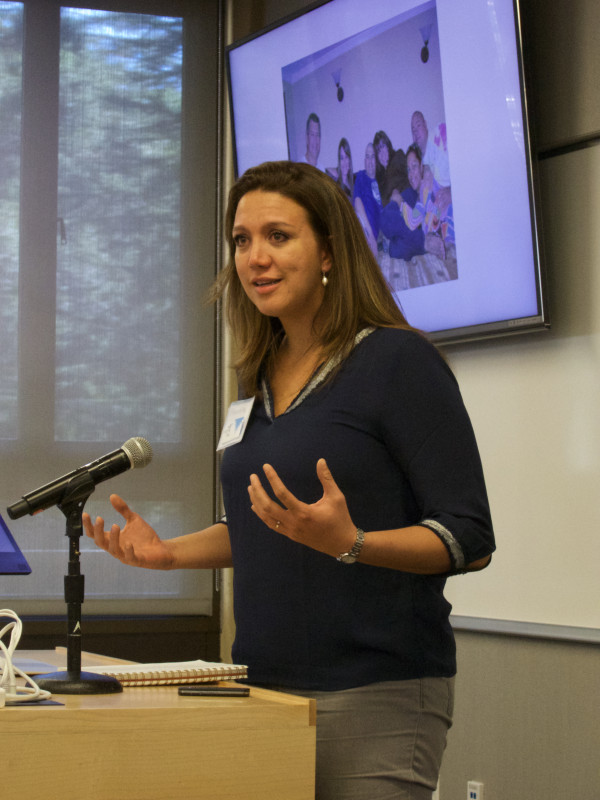
Dr. Peralta talked about the need to focus on why in medical research. The whys are patients and their loved ones.
Sage Scholar: Gaston Remmers: “Patients as Researchers: Accelerating Innovation in Food and Health Beyond the Evidence Based Paradigm.”
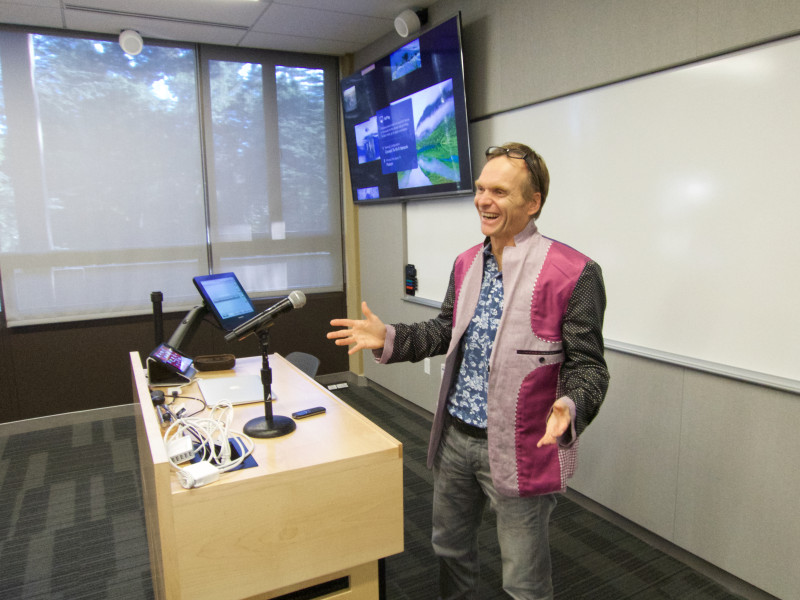
Dr. Remmers proposed an idea: what if therapies could be incorporated into personalized food? So instead of drugs, patients get food that is not only nutritionally good for them, but also delivers some of the benefits of drugs. It was an intriguing idea from a patient advocate.
Sage Scholar: Charvi Shetty: “Taking Control Over Your Own Health”
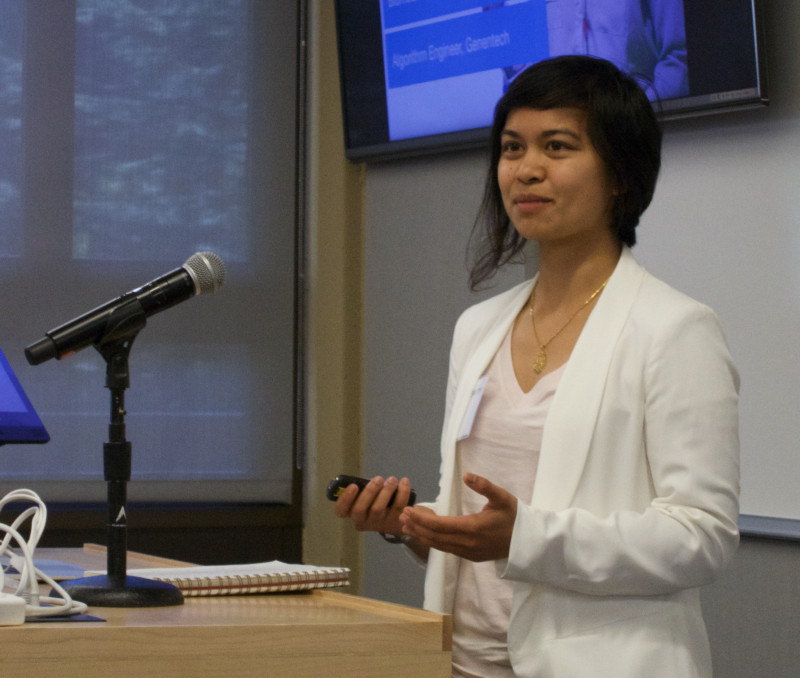
Charvi Shetty developed a cheap way of tracking the current state of asthma in the youngest patients. Currently, the devices used in the hospitals cost many thousands of dollars and are huge! So patients get only infrequent snapshots of their conditions—not enough to get a clear image of the disease progress. Charvi changed all that! She and her team developed a small, cheap, portable device that patients can use at home. Now, there will be more refined data at a lower price point and better diagnostics and treatments can be developed and targeted at this group of patients.
Her work puts Charvi on the left side of my chart—diagnostics. And she is not done. She formed KNOX Medical Diagnostics company whose focus is on identifying other devices that can be miniaturized and whose cost could be lowered and whose operation could be simplified enough to be used by patients at home, thus increasing access to medical data.
Sage Mentor and Organizer/Planner: Olga Werby: “The Power of YES”
We all had a lot to say, and unfortunately we ran out of time! I hope Sagers feel free to contact each other and to find ways of co-operating and collaborating on projects in the future. I didn’t get to give my little presentation on the power of YES. So here it is below—thank you all for participating!
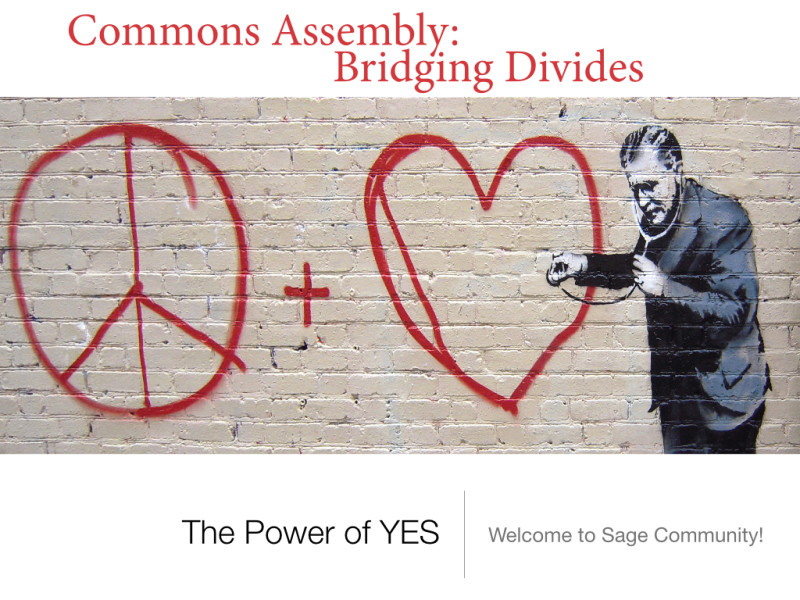
Look around you. Every person in this room said YES to being here today;
YES to getting up early on a Saturday;
YES to spending the day learning something new;
YES to sharing their ideas;
YES to flying half-way around the world;
YES to using their resources and energy to make the world a better place.
YES is a powerful word.
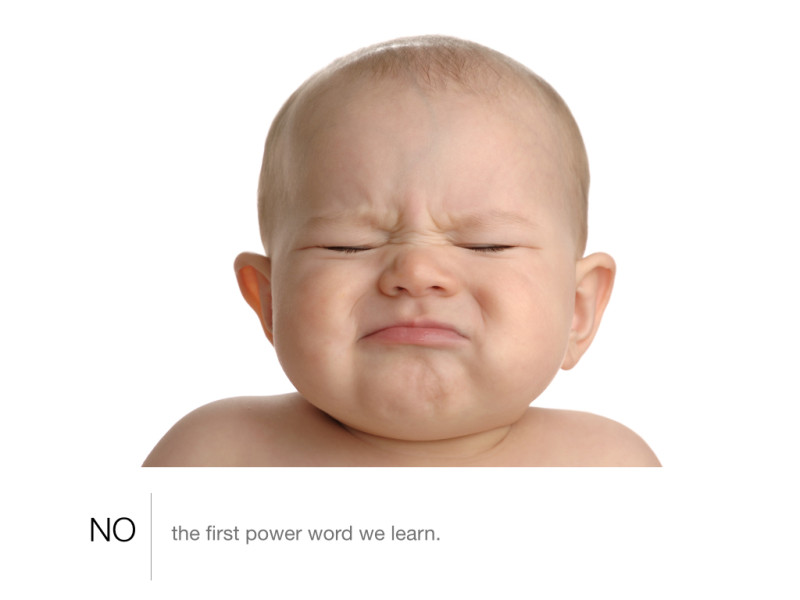
When we were little, NO was the most powerful word we knew. But NO only has power in its immediacy.
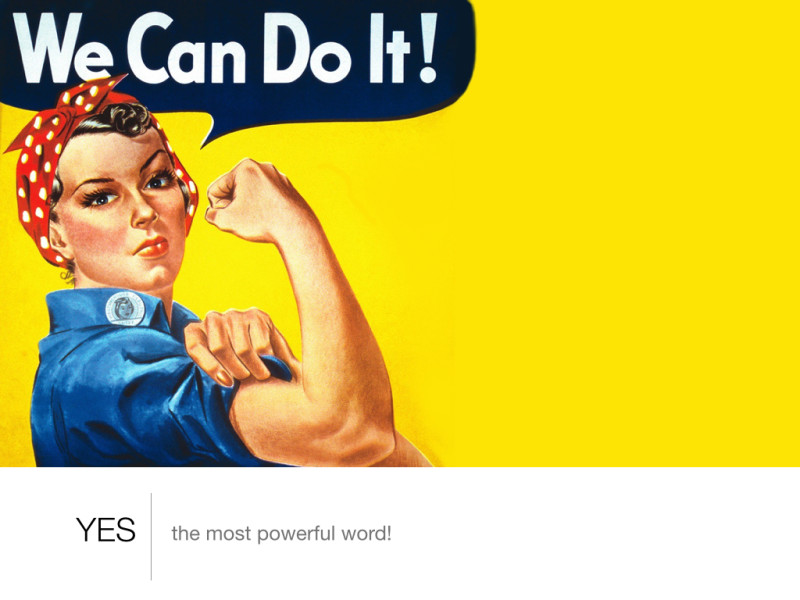
YES is the most powerful thing we can DO—saying YES requires long-term commitment to action. It requires that we give of ourselves. YES changes the world.

Today we come together because of the power of YES. We bridge the divides that separate us by the YES that binds us.
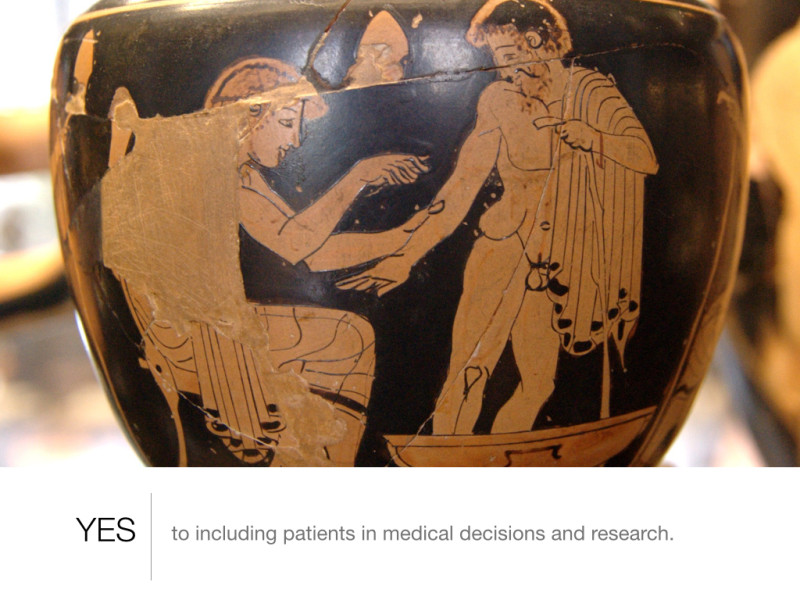
YES to including patients in medical decisions and research.
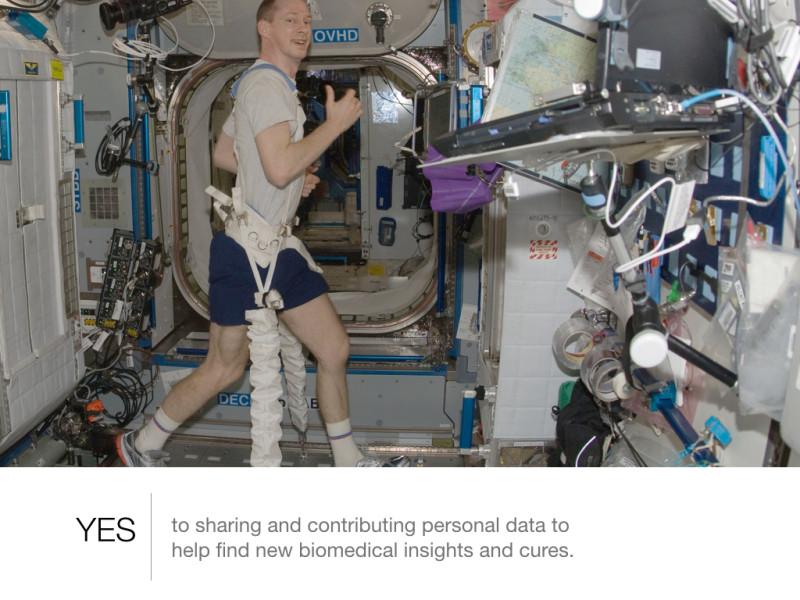
YES to sharing and contributing personal data to help find new biomedical insights and cures.
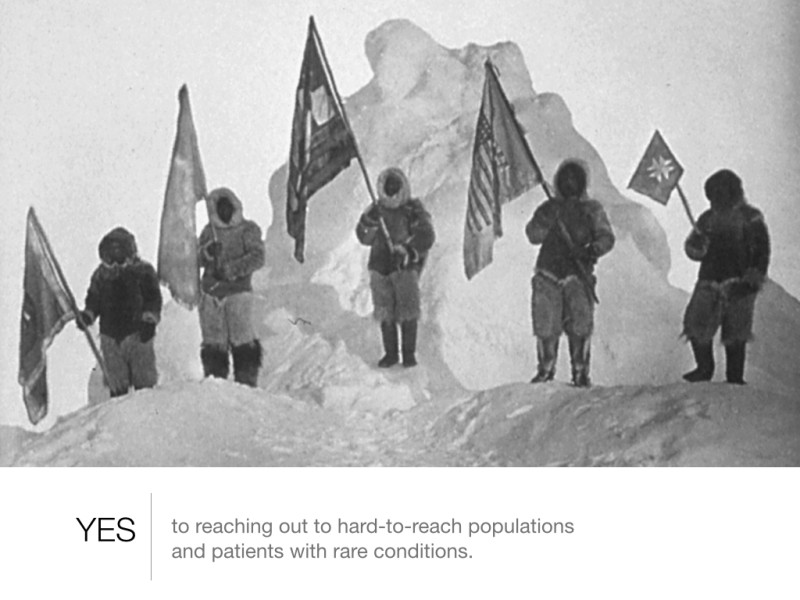
YES to reaching out to hard-to-reach populations and patients with rare conditions.
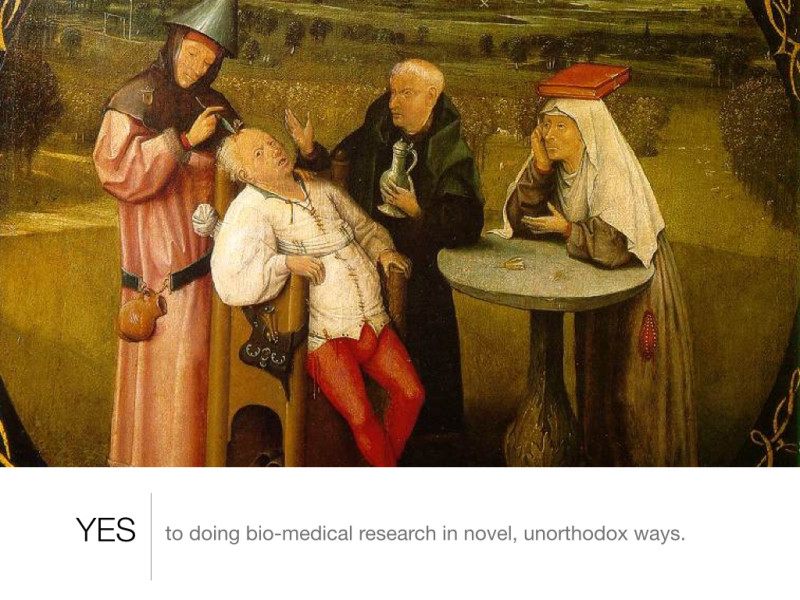
YES to doing bio-medical research in novel, unorthodox ways.
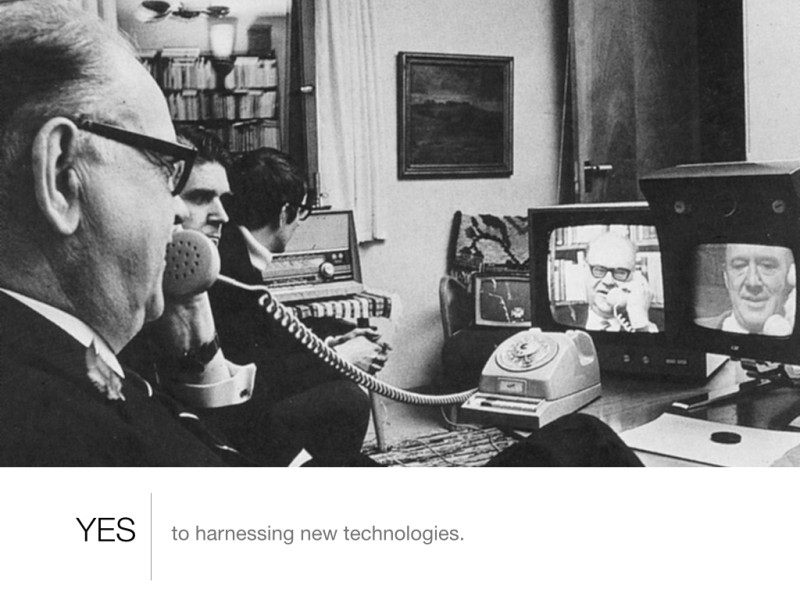
YES to harnessing new technologies to think and to do things differently.
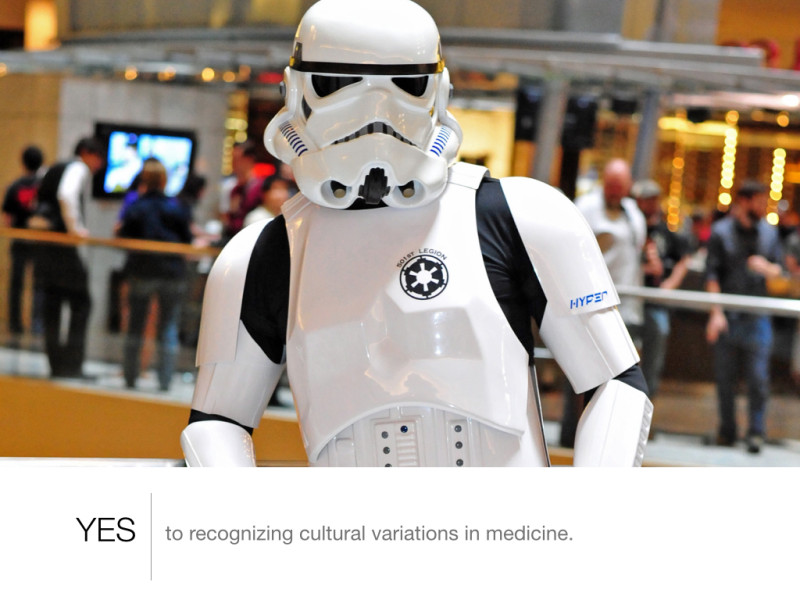
YES to recognizing our differences and embracing them rather than discarding and overlooking the role of our cultural variations in medicine.
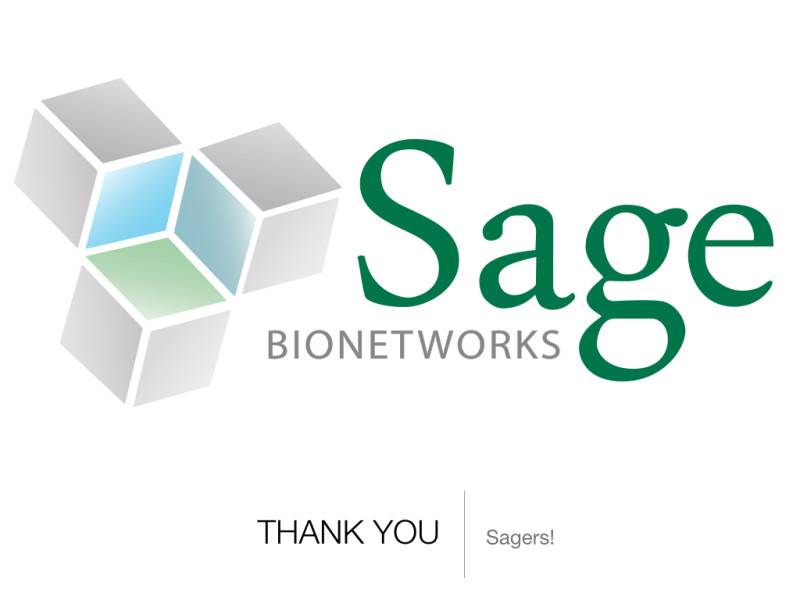
YES is the most powerful word, the most powerful idea. And I am so proud and honored by so many of you saying yes to me and to Sage Bionetworks—one of the pioneers in adopting YES to medical sciences—and joining us here today.
Thank you for all of the YESes that got you here and for the YESes yet to come.
I hope you continue to say YES to future opportunities for sharing information and to future Sage Events.
